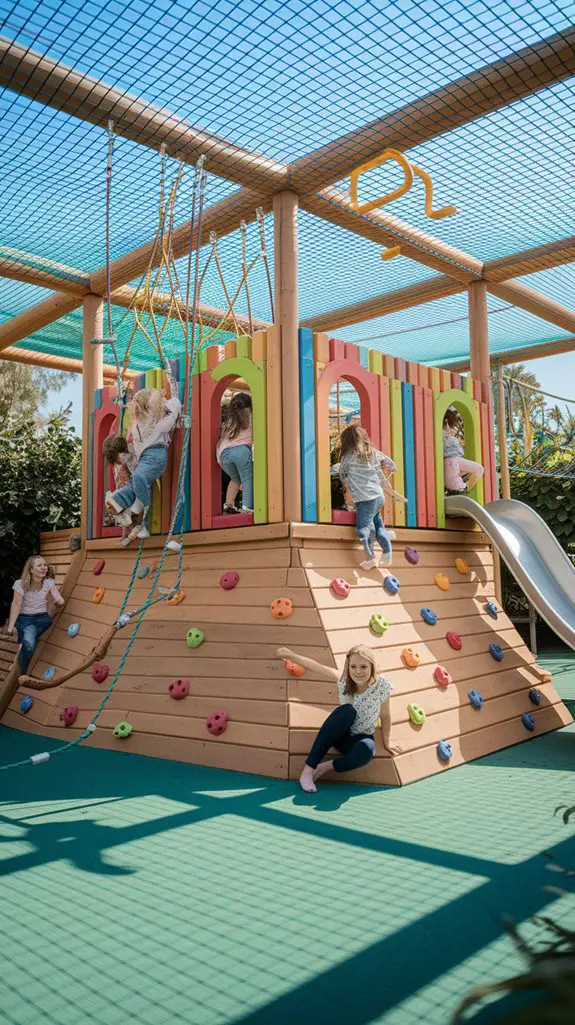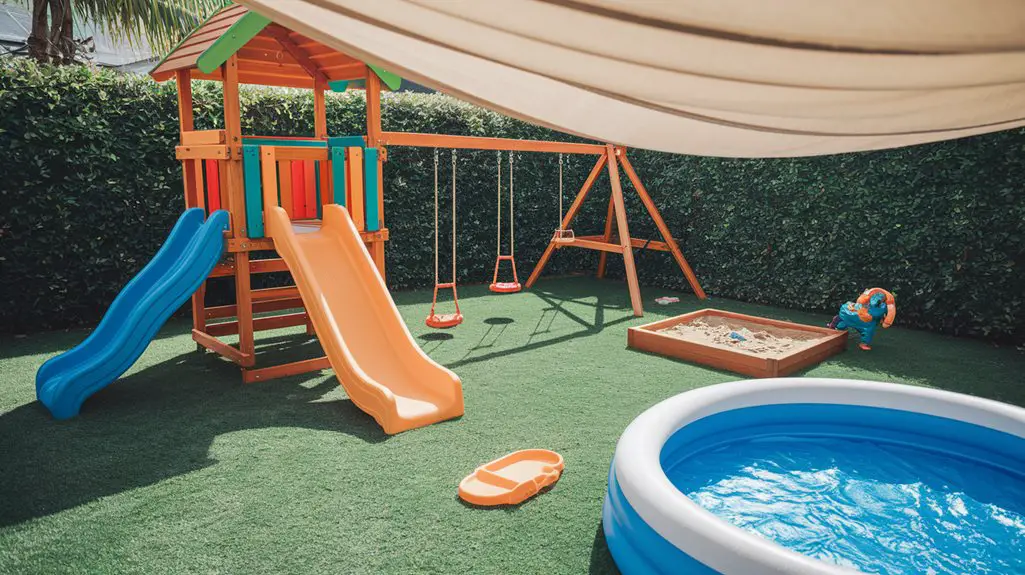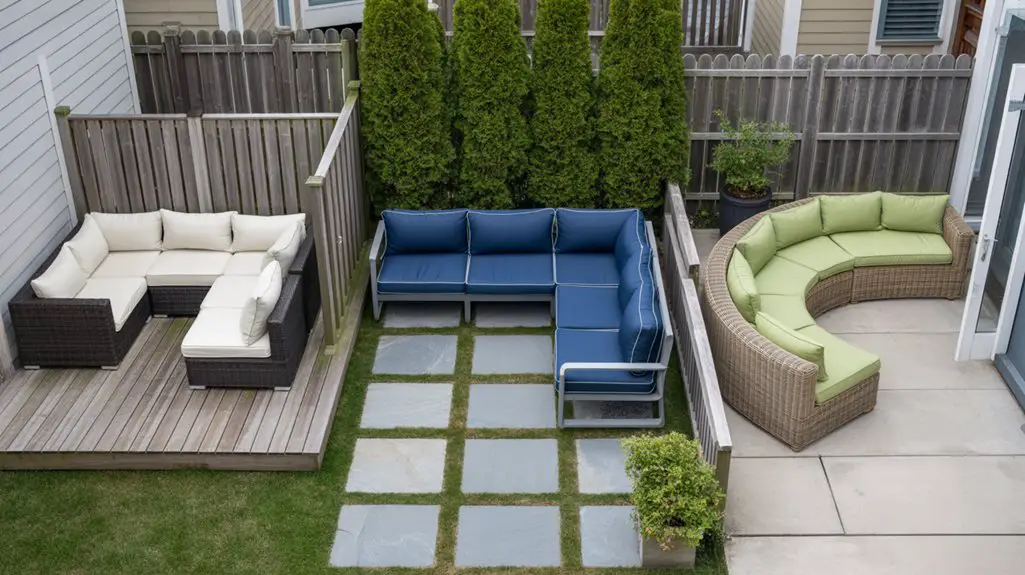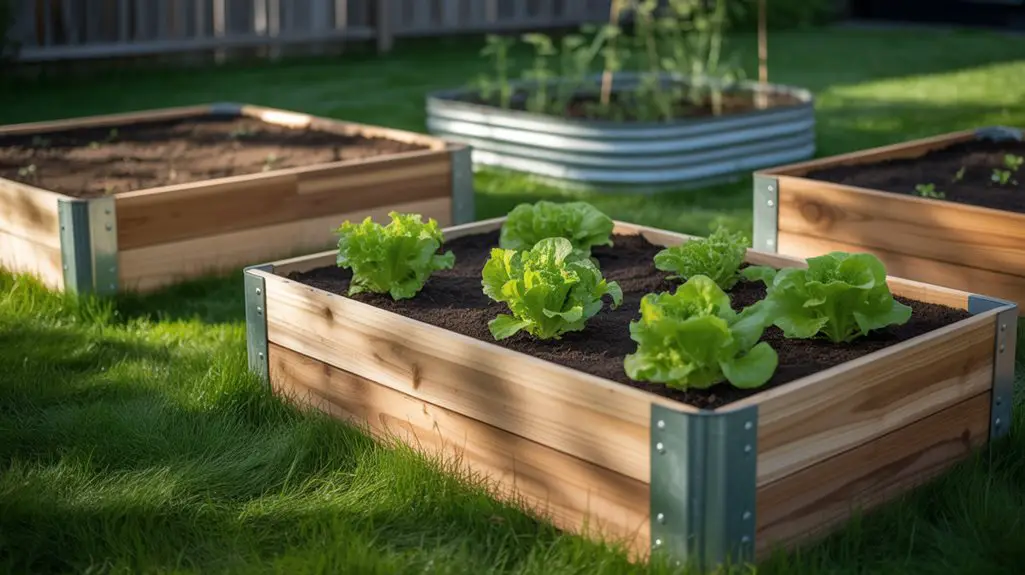Ever wondered how to transform your backyard into a magical play paradise? You don’t need extravagant equipment or expensive renovations to create spaces where children’s imaginations can truly soar. The most effective play environments combine sensory stimulation, physical challenge, and natural elements that invite open-ended exploration. When children step into thoughtfully designed play spaces, they develop essential skills while experiencing the pure joy of discovery. Let’s explore the three most powerful approaches to building your own play paradise.
Designing a Multi-Sensory Outdoor Play Zone
Why limit a child’s outdoor play to just visual stimulation when you can engage all their senses? Create texture stations with sand, pebbles, and moss where little hands can explore different feelings.
Install wind chimes, outdoor xylophones, or bamboo water features that produce gentle sounds when touched or moved by the breeze.
For olfactory development, plant aromatic herbs like mint, lavender, and rosemary at child height. Consider edible gardens with strawberries or cherry tomatoes that offer safe tasting opportunities.
Balance active zones with quiet sensory corners where overwhelmed children can retreat.
Research shows that multi-sensory play environments enhance cognitive development, problem-solving skills, and emotional regulation. Additionally, providing multi-sensory play environments encourages children to naturally explore and learn through hands-on experiences.
You’ll notice children spending longer periods engaged in self-directed play when their environment activates multiple neural pathways simultaneously.
Building Safe and Creative Climbing Structures

Climbing structures provide essential developmental benefits for children of all ages, so long as they’re designed with both creativity and safety in mind.
When building your own climbing features, prioritize sturdy materials, proper anchoring, and appropriate fall zones with cushioning surfaces.
Your climbing structures should include:
- Height-appropriate challenges that grow with your child’s abilities
- Multiple ways to climb (ropes, ladders, rock holds) to develop different muscle groups
- Designated rest spots where children can pause and plan their next move
- Sensory elements like textured surfaces or musical features that engage multiple senses
Incorporating creative play elements can further enhance children’s enjoyment and engagement in these structures.
Remember that supervision remains vital even with well-designed structures.
Regularly inspect for loose connections, splintering wood, or signs of wear.
The best climbing structures balance calculated risk-taking with boundaries that keep play adventurous yet safe.
Incorporating Natural Elements for Imaginative Play

Natural elements offer children a multi-sensory playground that commercial equipment simply can’t replicate. Incorporate logs, stumps, and boulders to create balance courses that develop coordination while sparking imaginative scenarios.
Add sand areas where children can dig, build, and explore properties of matter through tactile experiences.
Consider planting a sensory garden with herbs like mint and lavender that release scents when touched. Shallow water features invite scientific exploration through pouring, measuring, and observing flow.
Collections of pinecones, shells, and smooth stones become versatile props for creative play.
Research shows that natural elements encourage longer play sessions with more diverse physical movements and collaborative storytelling. Eco-friendly materials promote safety while nurturing creativity in children’s play environments.
You’ll notice children developing problem-solving skills as they incorporate these open-ended materials into their evolving play narratives.
Conclusion
When you build your play paradise, you’ll witness your child’s eyes light up with wonder as they dash through sensory gardens, conquer safe climbing challenges, and dream up adventures among natural elements. Their laughter will echo as fingers dig through cool sand and tiny feet splash in shallow puddles. You’re not just creating a playground—you’re cultivating a world where childhood thrives in all its beautiful complexity.




